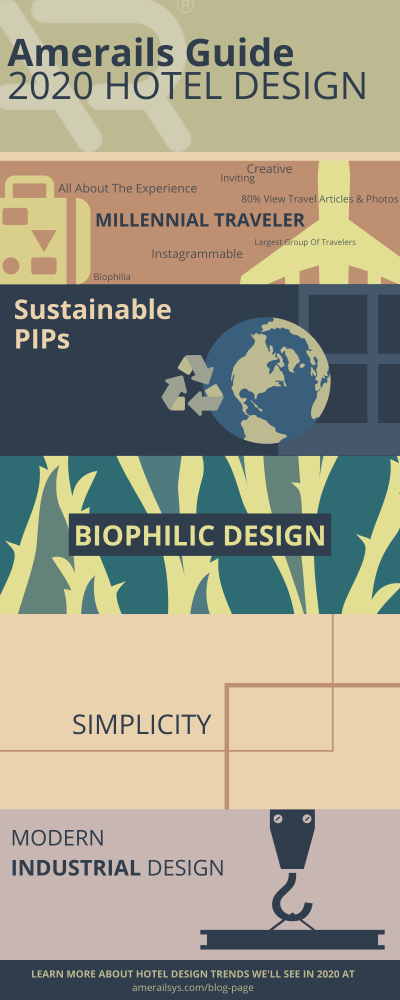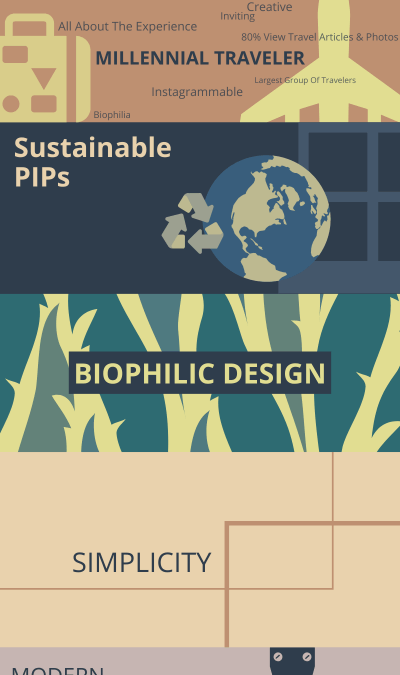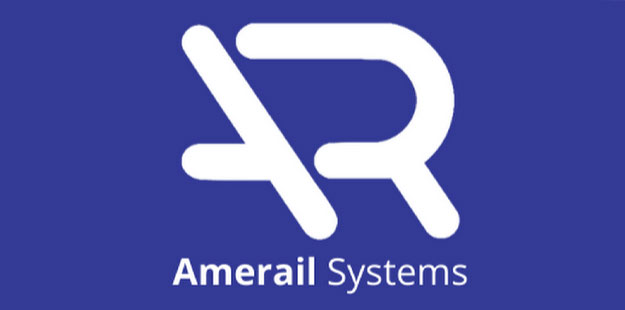2019 is coming to an end and along with it a decades worth of hotel design trends. No longer will you see branded hotels with busy parapets (rooflines) or muted neutral EIFS shades. Gone are the days of elaborate porte cocheres and smooth exterior faces. In the new decade we welcome in a completely new look for hotel brands. Instead of your typical changes in EIFS & roof colors or additions to the parapets, we look forward to seeing more modernized exteriors that incorporate *biophilic design and more.
A QUICK RECAP OF THE DECADE
Entering the decade
While arriving to hotels in the late 2000’s you would have been greeted by muted colors on the hotels facade with maybe a pop of color on the roof (typically either terracotta or green). You would also see a variety of parapets & roofs ranging from rounded to mansard to shingle. One of the most prominent features across hotel brands before 2010 were rounded pediments/parapets and arches. It seemed that the individuality of a hotels exterior relied on their roofline.
Early 2010’s
In the beginning of 2010 we began to see a switch in rooflines/parapets from something more decorative and busy to something simple and flat. Curves on the parapets were cut across brand designs while step downs and crowning remained present. Another major change to the roofs of hotels were the colors. Before, metal mansard roofs or shingle roofs were shades that stood out from the beige facade such as terracotta, green or blue. New PIPs required brands to lose the colors and paint over them with a more neutral shade. Porte Cocheres remained mainly the same aside from some choosing to lose the stone and brick and go for a simpler cleaner look.
Mid to Late 2010’s
Settling into the mid 2010’s brands began to experiment in diversifying their look. Rooflines were flat and simple with some including signature cornices and cornice uplighting. While the real experimentation came with porte cocheres and facade color. Porte Cocheres went from being non-eye-catching extrusions from the hotel to a more modern and comforting method of entry. Curb appeal that represented a more hospitable environment was the goal. New porte cochere designs included an element of design that would set them apart from the competition such as curved roofs and fiberglass/clear ceilings. Color wise, hotel brands began switching from the muted beiges to more vibrant colors that would catch the eye of the traveler. From oranges to dark chestnut to pops of bright green, hotels were trying to grab attention and keep it. Moving into the late 2010’s colors would begin to change across brands. The goal being to add dimension and take away the flatness of facades. Natural shades of grays with pops of darker colors began to appear in PIPs across brands along with natural looking elements such as wood and stone.
2019
It’s 2019 and while driving up to your hotel you notice that the exterior is a lot different from what you saw last time you visited a couple years back. The facade is no longer beige, beige and beige the once mildly comforting neutrals have been replaced by a possibly even more comforting, more modern color palette. When you look up the metal mansard is gone and the roofline has a sharper roofline and there are large pediments adding depth and dimension to the exterior. Windows are framed with shadow boxing and the lighting has been switched out for LED. You enter through the now simple but modern porte cochere and notice the natural elements on the hotels facade and even on the ceiling of the porte cochere. After taking in the new curb appeal you’re feeling comforted by the modernity & biophilic mixed design and now you’re thinking of extending your stay.
LOOKING FORWARD INTO 2020
Based off of the design trends in the past decade and what we have seen in PIPs we have a few predictions for where exterior hotel design will head in the new decade. The term “Biophelia” will be important to know and understand in the coming years. Biophelia is our intrinsic need as humans to interact with nature. This feeling has been growing in popularity and we don’t see it going anywhere soon. To satisfy this need, hotel designers began including elements that bring nature to guests.
The infographic below gives us a quick look into what we think we’ll see in 2020.

Trends that will continue:
In 2020 we predict that we will see more of the following trends that have been present in the last couple years. Most of these design elements revolve around that feeling of biophilia.
- Natural looking materials (wood & stone accents)
- Creative use of LED lighting
- Biophilic design
- Instagrammable design – making the design an experience
- Sleek lines
- Modern color schemes (gray, black, white, etc.)
- Slimmer Porte Cochere
- Integration of local culture in design and finish (stone, wood, colors)
- Shadow boxing on windows & framing
New Trends Emerging:
Let’s break down that infographic above…
Designs More Focused on the Millennial Traveler
We have to assume hotel leaders are taking the new generation of travelers into consideration. Millenials are twice as likely to travel than older generations making them more likely to contribute to the hotels profits even with the emergence of Air BnBs.
Because of the massive amount of younger travelers, hotels need to know what they’re looking for. It is now all about the guests first impression when they arrive and an aesthetic that turns your guests into your best advertisers. Things like: experiential designs that are instagram worthy enough so they promote you on social media and a focus on guest arrival that will entice them to extend their stay.
For example: As for design, first impressions will be warm and inviting by using new lighting techniques & placements. This trend is listed first because all trends emerging are influenced by the need to satisfy and attract the Millennial traveler.
Hot Take:
80% of Millennials view travel articles and photos online and ⅔ are viewing travel videos online. Making sure your hotel’s exterior is instagram worthy and appealing to the eyes of the largest consumer in traveling right now is vital.
More Sustainable Practices/Requirements in the PIPs
It’s no secret that having a “green” element in your business’s practices is almost essential for a large corporations public image now. Many brands have already adapted their pips and service standards to include green practices. In 2020 we’re preparing for even more sustainable requirements in PIPs for exterior hotel design. For example, in a PIP for exterior renovations this may be a job where we replace a hotels current windows with energy efficient ones.
Expansion on the Idea of Biophilic Design
In recent years biophilic design has become present in hotel PIPs with the requirements of faux wood and stone elements. Moving forward into 2020 and beyond we’re predicting hotel designs to take bringing nature to the guest to the next level to satisfy that biophilia within them. This means the addition of waterfalls, larger windows, better view orientation and of course plants and natural stone integrated both on and inside the buildings.
Simple Designs With Less Noise
This could potentially mean less mixing of materials and colors. For example choosing just one material such as wood with a monochromatic color scheme vs both wood and stone. Taking into consideration the trend of industrial design below we predict that if this statement is true hotels will opt for wood and metal.
Industrial Style Elements Will be Present in Both Exterior & Interior Hotel Design.
Modern industrial design will spread from condos and office spaces to hotels in the coming years. Why? Because with modern industrial design comes comfort in not having to overthink. Industrial elements will be present because of their raw simplicity but also because of the way they compliment everything around them. The “old” look of metal beams or exposed brick will make everything around them look refreshed. Industrial design gives a hotel a more raw and tangible look while creating a comfortable, relaxed environment where Millennials can feel the sense of innovation and be inspired. We predict we will see more industrial style metal on the porte cocheres and inside lobbies/hotel bars which could contribute to the more inviting and warm aesthetic upon arrival that hotels are aiming towards.


